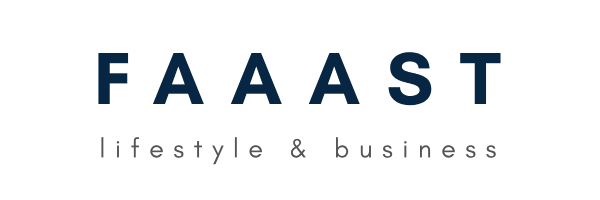What You Should Know Before Taking Out a Personal Loan?
The financial world can feel like a complex web, where one wrong move can lead to confusion, unexpected costs, or even debt. Personal loan is one of the most versatile tools available, yet many people don’t fully understand how they work or how to make the best use of them.
In this guide, “The Ins and Outs of Personal Loan: Everything You Need to Know,” we simplify personal loan, offering clear information for both beginners and seasoned borrowers. Whether you’re exploring your first loan, managing existing debt, or simply looking to boost your financial knowledge, this resource will equip you with essential insights.
Let’s untangle the details of personal loan together, so you can make confident, informed financial choices.

Understanding the Basics of Personal Loan
Personal loan is a popular financing option for covering various expenses, whether it’s consolidating debt, funding home renovations, or handling unexpected costs. Knowing how personal loan work, what they can be used for, and understanding the pros and cons can help you make informed decisions.
What is a Personal Loan?
A personal loan is a type of installment loan that allows you to borrow a specific amount of money, which you then pay back in monthly installments over a set period. Unlike secured loans, personal loan are typically unsecured, meaning they don’t require collateral such as a car or home. Here’s a breakdown of the basics:
- Unsecured: No collateral is required.
- Fixed Loan Amount: Borrowers receive a lump sum.
- Monthly Payments: Repayment is done in equal installments.
- Varied Interest Rates: Rates depend on your credit score, income, and lender.
Understanding these basic elements can help you make more informed decisions when choosing a loan that suits your needs.
Why You Might Need a Personal Loan?
People use personal loan for a wide variety of financial purposes. Here are some common reasons:
- Debt Consolidation: Combine multiple high-interest debts into one manageable payment with potentially lower interest.
- Home Renovations: Fund repairs or upgrades to increase your home’s value or comfort.
- Medical Expenses: Cover emergency health bills or planned procedures.
- Major Life Events: Weddings, vacations, and other significant events often require a large upfront cost.
- Unexpected Expenses: Handle sudden financial setbacks, like car repairs or relocation costs.
- Big Purchases: Purchase items like electronics, appliances, or a car without using high-interest credit cards.
Using a personal loan in these situations can provide financial flexibility and convenience, particularly if you don’t have immediate funds available.
The Application Process for Personal Loan
Applying for a personal loan is straightforward, and many lenders offer an online application process. Here’s a step-by-step guide to help you understand what to expect:
- Determine Your Loan Needs
Start by identifying how much you need to borrow and why. Having a clear purpose for the loan can help you narrow down your options. - Gather Required Documents
Typical documents include:- Proof of income (pay stubs, tax returns)
- Government-issued ID
- Bank statements
- Compare Loan Offers
Check rates from multiple lenders to ensure you get the best deal. Look at both the interest rate and any additional fees that may apply. - Submit Your Application
Complete the application form with accurate details about your financial and personal information. - Credit Review
The lender will review your credit history, score, and income to evaluate your creditworthiness. - Receive Loan Offer
Once approved, you’ll receive an offer with details like:- Loan amount
- Interest rate
- Repayment schedule
- Review and Accept
Carefully read the loan terms before accepting. This is your opportunity to clarify any questions about fees, payment structure, or other conditions. - Receive Funds
After approval, the lender disburses the funds to your bank account, typically within a few business days.
Understanding each step can make the application process smoother and ensure you’re prepared to make well-informed decisions.
Important Factors: Interest Rates and Repayment Terms
Interest rates and repayment terms can significantly affect the total cost of a personal loan. Here are the key factors to consider:
- Interest Rates: Rates can be fixed or variable. Fixed rates stay the same throughout the loan term, while variable rates fluctuate. Shopping around helps you find the best rate.
- Loan Term: The repayment term impacts your monthly payments and total interest. Shorter terms usually mean higher payments but less total interest.
- Repayment Flexibility: Some lenders allow early repayment without penalties, while others charge fees for paying off the loan before the term ends.
By analyzing interest rates and repayment terms carefully, you can make sure your loan fits within your budget and financial goals.
Pros and Cons of Personal Loan
Personal loan have both advantages and disadvantages, so it’s crucial to weigh these before making a decision.
Benefits of Personal Loan
- Flexible Usage: Use the loan for almost any purpose, from debt consolidation to funding a vacation.
- Fixed Interest Rates: Many personal loan offer fixed rates, making it easier to budget your monthly payments.
- Lower Interest Than Credit Cards: Personal loan often have lower rates than credit cards, which can help reduce debt faster.
- Improving Credit Score: Making timely payments can boost your credit score, which is beneficial if you need to borrow again.
Drawbacks of Personal Loan
- Potential for High Fees: Some loan come with origination fees, application fees, or penalties for early repayment.
- Impact on Credit Score: Late or missed payments can damage your credit score, and too many loan inquiries can also impact it.
- Debt Accumulation: If used irresponsibly, loan can lead to additional debt, especially if you take out more than you need or struggle with payments.
Considering these pros and cons can help you assess whether a loan is the right financial tool for your situation.
How to Find the Best Personal Loan
Finding the right loan involves comparing different aspects of loan offers. Here’s what to focus on:
- Interest Rate: A lower rate will save you money over the life of the loan.
- Loan Term: Choose a term that provides a manageable monthly payment.
- Fees: Check for origination fees, prepayment penalties, and late fees.
- Lender Reputation: Read reviews and choose reputable lenders with clear policies and good customer service.
Taking the time to shop around can help you secure a loan that meets your needs and avoids unnecessary costs.
Common Questions About Personal Loan
To help clarify some common concerns, here are answers to frequently asked questions about loan:
- Can I get a personal loan with bad credit?
Yes, but the interest rate may be higher, and fewer lenders may be willing to offer loans. Consider improving your credit score before applying. - How does a personal loan affect my credit?
Making on-time payments can improve your credit, but missed payments can hurt it. Applying for multiple loans can also temporarily lower your credit score. - Can I pay off my personal loan early?
Some lenders allow early repayment without penalties, while others may charge a fee. Always ask about this when comparing loans. - What happens if I miss a payment?
Missing payments can result in late fees, damage to your credit score, and potential default. Contact your lender if you foresee payment issues to discuss options.
Making the Right Decision for Your Financial Future
Personal loans can provide quick access to funds, but they come with responsibilities. Before committing to a loan, evaluate your financial needs, compare offers from multiple lenders, and ensure you can meet the monthly payments. Regularly reviewing your loan status and staying on top of payments can help you use this financial tool wisely and achieve your goals without compromising your financial stability.
Summary Checklist for Personal Loan:
- Determine your purpose for borrowing.
- Compare multiple lenders and offers.
- Understand interest rates and repayment terms.
- Weigh the pros and cons.
- Review the loan offer carefully before accepting.
By considering these steps and factors, you can make a well-informed decision and choose the loan that best supports your financial needs and goals.










